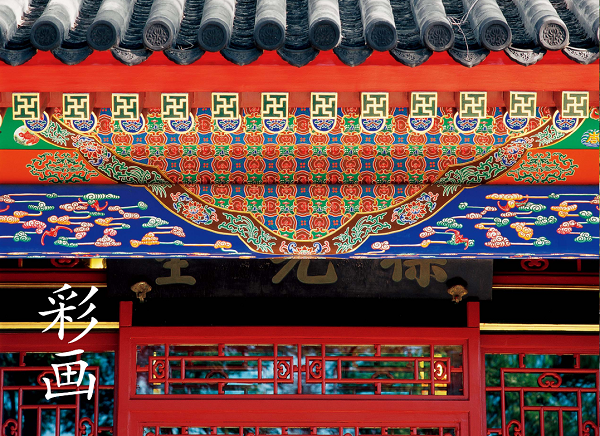

Polychrome decorative painting (cai hua) is a highly distinctive style of decoration in traditional Chinese architecture, where colors and paints are used to decorate or depict patterns, designs, and even stories on beams, lintels, columns, ceilings, bracket sets (dougong, a structural element of interlocking wooden brackets) and other parts.
Originating during the Spring and Autumn Period (770-476 BC), polychrome decorative painting in China reached maturity during the Qin (221-206 BC) and Han (206 BC-AD 220) dynasties, and underwent standardization throughout the Ming (1368-1644) and Qing (1644-1911) dynasties. The paintings in Prince Kung's Mansion are of Qing style, which can be categorized into three main types: imperial style (hexi), Xuanzi style (named after its typical design that features swirling flowers), and Suzhou-style.